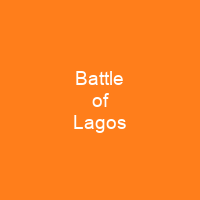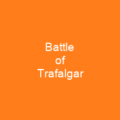The Naval Battle of Lagos: A Turning Point in the Seven Years’ War
Imagine a grand chess game, where two mighty fleets clash on the high seas, each side vying for supremacy. This was the scene during the Naval Battle of Lagos, fought between August 18-19, 1759, during the Seven Years’ War. The British fleet under Edward Boscawen faced off against a French force led by Jean-François de La Clue-Sabran. Was it a battle of destiny or mere chance that these two fleets met in the waters near Lagos?
The Context: A Global Conflict
Before we dive into the details, let’s set the stage. The Seven Years’ War (1754-1763) was a global conflict between France and Great Britain. By 1759, both nations were evenly matched in land and sea campaigns, but William Pitt’s strategic reforms were starting to turn the tide for the British.
The French Fleet’s Mission
France had grand plans of invading Britain, requiring a large fleet to escort transports. However, their navy was plagued by issues: poor wages, loss of experienced sailors to privateering careers, and ships in poor condition. Despite these challenges, the French managed 73 ships of the line, but they were short on manpower, needing an additional 9,000 men.
The British Fleet’s Readiness
On the other side, the British had 55 ships of the line in home waters and another 15 in their Mediterranean Fleet. Edward Boscawen took command of this fleet in May 1759, with orders to prevent French fleets from joining forces.
The Clash: A Battle of Wits
On August 18, the French fleet passed through the Strait of Gibraltar under cover of darkness. However, they were quickly spotted by HMS Gibraltar, leading to a chaotic scramble as British ships tried to get underway. The French, perhaps wanting to remain inconspicuous, did not follow the same practice.
By dawn on August 18, La Clue saw only six other ships and ordered them to rally around his flagship. When he realized these were all British, it was too late. The French fleet sailed at a slow speed, allowing the British to gradually overtake them by afternoon. The British ships proved faster and benefited from variable winds, giving them an advantage.
The Fierce Engagement
At 1:00 pm, the French ships hoisted their battle ensigns and opened fire at long range. However, the British were unable to effectively reply due to ship design limitations. The Culloden engaged Centaure for five hours before surrendering. Namur also attacked Océan, causing significant damage and forcing its retreat.
The six surviving French ships fled to Portugal, where they were blockaded by the British. The Portuguese opened fire on Boscawen’s ships, allowing him to attack without violating neutrality laws. Several French ships, including Océan, Redoutable, and Modeste, were captured or sank after being fired upon and set ablaze.
The Aftermath: A Definitive Victory
While the battle had no impact on France’s invasion plans, it did block several French ships in Cadiz from reaching Brest. The British government supported Boscawen’s actions despite breaching Portuguese neutrality, leading to Spain and France declaring war on Portugal.
A Heroic Victory
Boscawen was hailed as a hero, and his victories were part of a series that earned 1759 the nickname ‘an annus mirabilis.’ Notable individuals who participated in the battle include Pierre André de Suffren, Olaudah Equiano, and others. The three captured French ships went on to serve in the British navy as HMS Centaur, Modeste, and Temeraire.
Conclusion
The Naval Battle of Lagos was a pivotal moment in the Seven Years’ War, showcasing the strategic brilliance of Edward Boscawen and the determination of his fleet. It stands as a testament to the importance of naval power in global conflicts and the enduring legacy of those who fought on both sides.

You want to know more about Battle of Lagos?
This page is based on the article Battle of Lagos published in Wikipedia (retrieved on November 28, 2024) and was automatically summarized using artificial intelligence.






